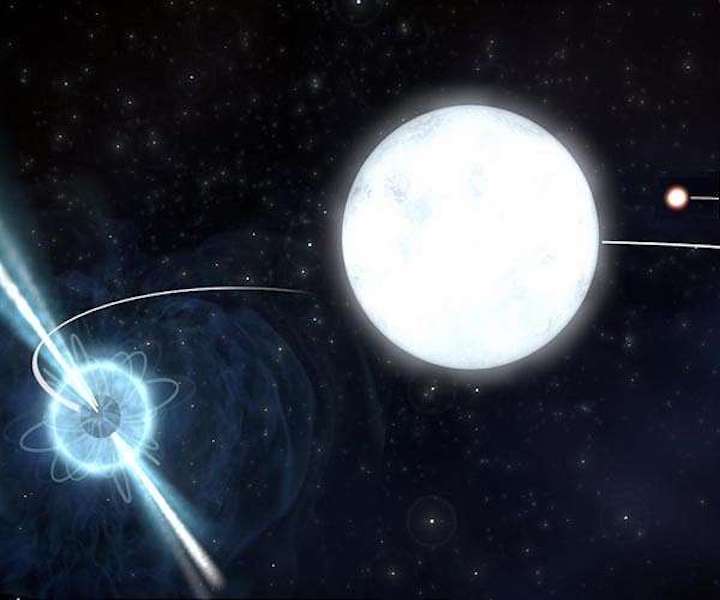2.02.2020

A century after it was first theorized, researchers have detected the effects of Lense-Thirring precession - an effect of relativistic frame-dragging - in the motion of a distant binary star system, a new study reports.
The results of the twenty-year study confirm a prediction of Einstein's general theory of relativity. When a massive object rotates, general relativity predicts that it pulls the surrounding spacetime around with it, a phenomenon known as frame-dragging.
This phenomenon causes precession of the orbital motion of gravitationally bound objects. While frame-dragging has been detected by satellite experiments in the gravitational field of the rotating Earth, its effect is tremendously small and challenging to measure.
More massive objects, such as white dwarfs or neutron stars, provide a better opportunity to observe the phenomenon under much more intense gravitational fields. Vivek Venkatraman Krishnan and colleagues observed PSR J1141-6545, a young pulsar in a tight, fast orbit with a massive white dwarf.
They measured the arrival times of the pulses to within 100 microseconds, over a period of nearly twenty years, which allowed them to identify a long-term drift in the orbital parameters.
After eliminating other possible causes of this drift, Venkatraman Krishnan et al. conclude that it is the result of Lense-Thirring precession due to the rapidly rotating white dwarf companion. The findings confirm the prediction of general relativity and allowed the authors to constrain the white dwarf's rotational speed.
Quelle: SD
